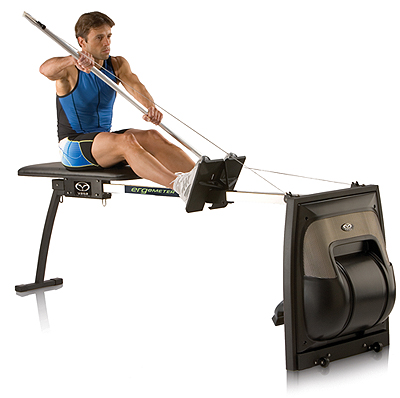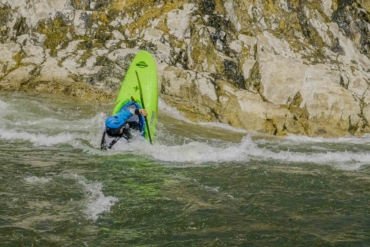This winter, I have kicked my athletic training into high gear. In February, I am traveling to Chile to captain a team in the Wenger Patagonian Expedition Race, an ultra-endurance event through Tierra del Fuego. The multi-day race will include long treks, mountain bike segments, climbing, and sea kayaking in icy ocean waters at the tip of the South American continent. It’s a once-in-a-lifetime event. I want to be prepared.

To get serious about the kayaking sections in the race, for the past three months I have been sitting on a machine in my basement “paddling” for an hour at a stretch. The Kayak Ergometer, an esoteric exercise machine made by Vasa Inc. of Essex Junction, Vt., has a paddle-like shaft to grip, a contoured seat, foot braces, and a flywheel drive that gives resistance with each pulled stroke.
The machine mimics the kayaking experience better than anything I have tried. My strengthened abs, shoulders and arms are testimony to the Ergometer’s efficiency in whipping a body into paddling shape.

The Kayak Ergometer, priced a hefty $1,999 at www.vasatrainer.com, debuted in 2007 with foot braces and a bench seat. New for this winter, Vasa adds a kayak seat option. Called the K1 Swivel Seat, the new feature better matches the feel of being in a boat. I tested an early prototype; the final product comes to market on February 1, a few days before I depart for Patagonia.
Using the Vasa unit now for a couple months, I have come to like the sound of the machine: Pull a stroke with the paddle shaft and you force air through the flywheel fan. The quiet noise and moving air conjure waves and natural movement on a lake.
The resistance is even throughout the whole stroke, making for an accurate substitute to pulling a paddle blade through water. There are varying levels of resistance to set, letting you simulate paddling down-river or upstream against a current.

A small digital monitor displays your time, distance, pace, and power output in watts. It can measure right and left arm force individually, letting you adjust technique if one side overpowers.
continued on next page. . .






